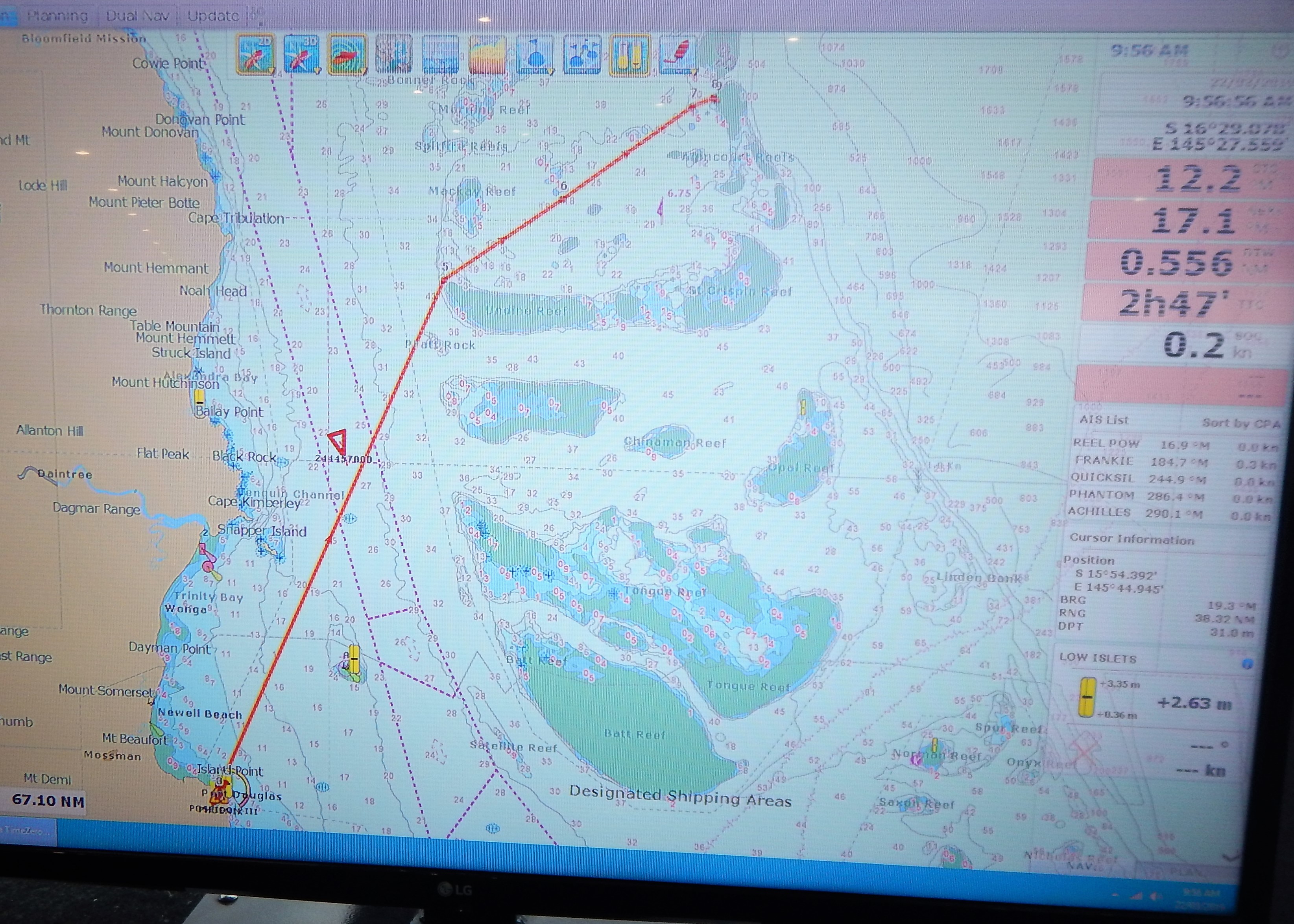The Great Barrier Reef stretches from Papua, New Guinea to Lady Elliot Island, about 280 miles north of Brisbane, about 1400 miles long altogether, and giving the name of its building block, the coral, to the Coral Sea. There are 2900 individual coral reefs and 900 islands, give or take, in the Great Barrier Reef system. Our group went to Agincourt Reef this morning for snorkeling, with options to SCUBA dive, use a clear bubble helmet, take a snorkel tour with a marine biologist, or have a helicopter ride over the reef. There was also a semi-submersible glass walled boat available to ride for 20 minutes or so. The excursion company we used is called Quicksilver. It has busses to collect people from the large resorts in the area; a big ferry-type boat to take people out to the reef; a catamaran that is anchored at the reef to serve as a dive platform, restaurant and equipment facility; and the aforementioned glass bottom boat.

We were provided with full body Lycra suits to wear while snorkeling to prevent sunburn and jellyfish stings. We were also provided with goggles, snorkel tubes, fins, pool noodles (optional) or life jackets (also optional). I had my waterproof camera, but they had cameras available for rental. There were plenty of crew to available to assist. There was not much danger of sunburn today, because there was a rain and wind storm in progress.
Lycra body suits are universally attractive garments that are easy to get on and off. Not.
But their protection from jellyfish stings is well worth the embarrassment and annoyance. (When wet, they seem not to dry out, either, so while you may get out of the water, you remain cold and damp.)

It has been raining in Port Douglas since we arrived. The crossing to the reef, which probably took 75 minutes, was very rough and caused motion sickness for some members of our party, even though they were pre-medicated. There were 2-foot waves in the snorkel zone, with wind and occasional downpours. The water temperature was about 82. Because of the recent cyclones, the king tides due to the full moon, the coral spawning in response to the lunar cycle, the water was cloudy. Add that there was no sun, and you will understand that the photography opportunities were poor. However, I did not come to the Great Barrier Reef but not snorkel because of stormy weather, challenging waves and poor photographic options.

The pictures I took today may eventually (with actual, purchased photo processing software) look nice, but the best I can show at this point are photos of coral that are monotone greeny-blue, and a fuzzy photo of a couple of fish. The photos from the glass-bottom boat were a failure due to the distortions of the glass and lack of sunlight.
These were shot with a Nikon Coolpix AW 120, which has been a sturdy little point and shoot for me for several years. Don’t think of your little underwater camera as just a uni-tasker!


